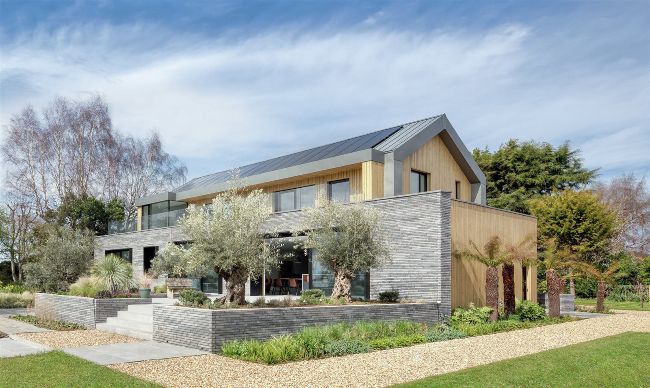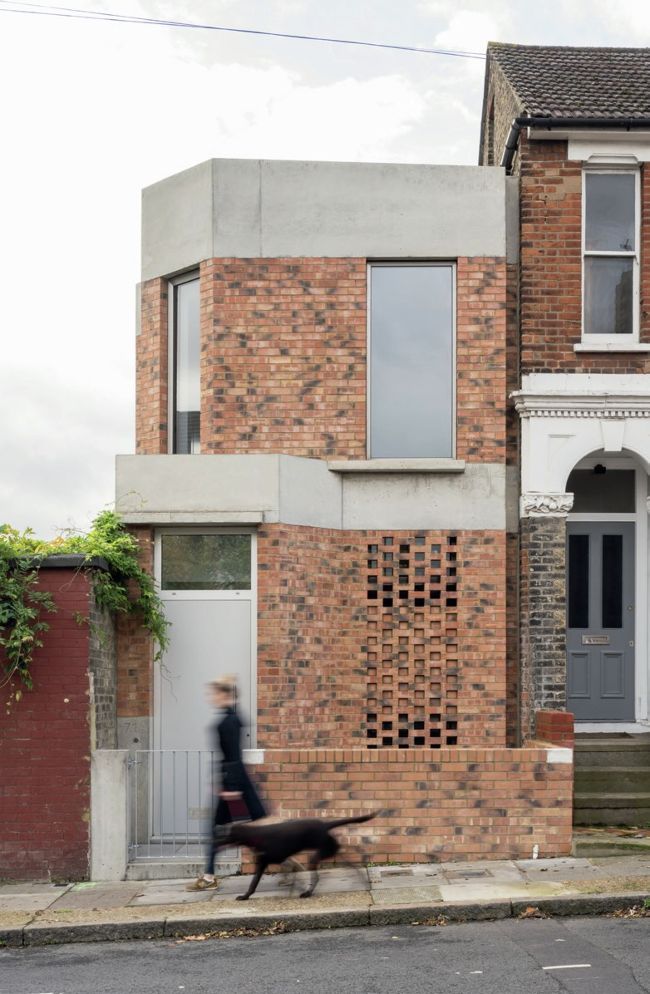STARTING YOUR SELF BUILD IN 2025
Simplif y the journey to creating your dream home this year, by followingMark Stevenson’stop tips on ever y thing from tracking down the perfect plot of land to finding a great builder

Right: Helyer Davies Architects (www.hd
architects.co.uk) developed the design for this replacement dwelling in Hampshire. When setting out their budget, the owners prioritised expansive areas of glazing so they could maximise the coastal views. They also made sure they had enough money set aside to incorporate a selection of renewable tech, including solar panels and a ground source heat pump
MARTIN GARDNER

Below: For the owners of this infill house in South London, creating a home to downsize to in their existing garden provided a more attractive route to self building than searching for a plot on the open market. Whittaker Parsons (www. whittakerparsons. com) crafted the design scheme
Creating a bespoke home is a project lots of people aspire to. But with ever increasing red tape and technical requirements, is it really something that can be done? Well, yes – and here’s how to go about it. Of course, there’s no denying it – building takes a lot of hard work, requiring careful planning and commitment. From setting a budget to finding a plot and breaking ground, each stage is vital in making the self build dream happen. Here’s my practical step by step guide.
FRENCH + TYE
Setting the budget
The budget is the foundation of any self build scheme. Without it, even the best-laid plans can fall apart. Projects often take years to get going, and inflation can make what seemed like a solid allowance feel much tighter. That’s why the first step is to validate your build costs and ensure that your goals are realistic and achievable.
Start by nailing down your brief and any special requirements. It’s easy to get carried away with trends and upgrades – but focus on the essentials. Do your research, separate the must-haves from the nice-to-haves and be ready to compromise if needed. Visiting self build shows, like Build It Live (www.builditlive.co.uk), can be a great way to explore the latest tech and get expert advice firsthand.
Your budget should cover everything, from the foundations and structural system to finishing touches and site management costs. Keep in mind that over half of your overall spend will typically go towards building the superstructure. Focus on the major expenses that deliver the most value, but don’t overlook the smaller costs – they can, and will, add up.
Funding the build
Securing self build finance can feel overwhelming, with strict lending rules and intense scrutiny. However, understanding how the project will be funded is crucial to keeping everything flowing smoothly. If you need a mortgage, start the process early. Once you have a mortgage offer, plan the cashflow and review the terms carefully. There’ll be rules to follow and drawing down funds might take longer than you expect.